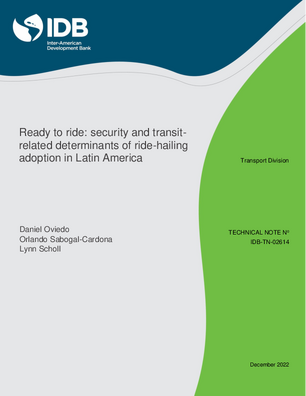Ready to ride: security and transit-related determinants of ride-hailing adoption in Latin America
Date
Dec 2022
Previous research on ride-hailing has focused on the effects that the built environment, demographic variables, and personal attitudes have on the frequency of ride-hailing use, finding that adopters are mainly young and highly educated people with increased levels of technology embracement. Despite that some scholars have shown that the convenience of ride-hailing such as their flexibility and major geographical coverage has led to users to prefer services provided by Transportation Network Companies (TNCs) over public transportation for some trips, there is a lack of research on how perceptions of public transit systems and TNCs can induce ride-hailing usage. In this article we extend the understanding of ride-hailing phenomena by proposing that structural gaps in public transit are key explanatory variables in the uptake and willingness to pay for ride-hailing trips. Building on an international survey in Mexico City, Bogotá, and Medellín, we develop a Structural Equation Model (SEM) incorporating latent variables expressing perceptions people have about features of ride-hailing and vulnerabilities in public transit. Results show that these variables are relevant. We also confirm that educational attainment and income are instrumental for ride-hailing trips, and that technology embracement is the most important variable to distinguish among levels of adoption. Findings inform public policy by focusing on the negative experiences of using public transit and how this could be generating more ride-hailing trips. TNCs are an attractive transport alternative that can fill gaps in public transit systems but that are also benefiting from structural problems in the transit systems.




